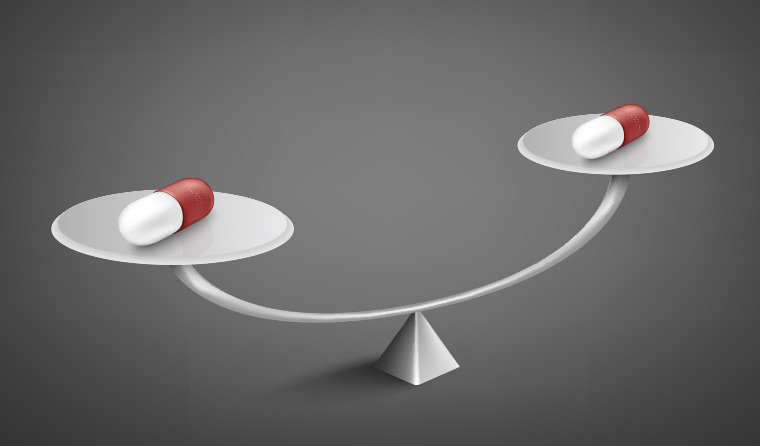Column
Old doc, new drugs: Tapentadol versus tramadol
Dr Casey Parker examines which is best to prescribe.
 Tapentadol versus tramadol: Which is better to prescribe?
Tapentadol versus tramadol: Which is better to prescribe?
If you’re like me (as a rural GP), you probably started noticing a trickle – and then a flood – of patients being discharged from big city hospitals on this new drug tapentadol.
Now, I am a simple rural doctor. When I saw the name tapentadol, I immediately assumed that it was a new version of tramadol, but with more letters to confuse the chaps over at the patent office.
I was sort of correct. These drugs are very similar, so it’s worth comparing them.
Tramadol
Tramadol is possibly one of the most maligned medications in a GP’s toolbox.
It’s an opioid used for pain management. But it’s unpredictable, with a lot of side effects, and often just doesn’t provide much relief. It’s an older drug, dating back to 1977.
Tramadol is a prodrug. That means, on its own it doesn’t do much of anything. It gets metabolised in the liver by the cytochrome p450 enzymes into a few active chemicals.
But here is the problem – the actual amounts of each of the active metabolites is a bit of a genetic lottery. Depending on the makeup of your cytochromes, you may get:
- a bunch of destramadol (aka M1), which has a strong mu-opioid receptor affinity and acts like morphine
- some venlafaxine, which is a serotonin/noradrenaline reuptake inhibitor (SNRI)
- a mixture of both of the above
- a whole bunch of other receptors, such as N and M acetylcholine, direct serotonin agonists, and the list goes on.
To some extent, you can ask a patient what effects they felt if they had a dose of tramadol previously.
In my experience, you get pretty clear likes or aversion to tramadol. The most common reply is along the lines of, ‘Oh, the drug that made me spew’.
Then then there is the risk of serotonin syndrome and seizures. This may come about for a few reasons:
- Older patients or people with renal/liver disease don’t clear metabolites and they build up
- Combining it with other serotonin norad-active drugs like antidepressants leads to a double whammy
- Patients with little metabolism to M1 take more and more doses to achieve analgesia and end up with a bunch of the SNRI metabolites in their systems
All in all, a tricky drug to use, since different patients may have a totally different experience with the drug.
Tapentadol
Now let’s introduce tapentadol, first released in 2008. It’s the new and improved version of tramadol, which is arguably not hard to do.
So, how is the new kid on the block different?
Tapentadol is not a prodrug – it does not rely on metabolism to get it working. So it is what it says on the box – an opioid analgesic. In addition:
- it has a strong mu-opioid receptor agonist effect, similar to oxycodone
- it has noradrenaline reuptake inhibitory effects, but not much effect on serotonin reuptake, which makes it a little cleaner
- there are no active metabolites yet known – so that sounds cleaner, too.
That all sounds nice and neat. A cleaner, direct-acting opioid with fewer side effects. But there must be a catch, right? There always is.
The biggest issue is that there is just not enough data available about the safety or efficacy of tapentadol. In the trials used to get it registered, the drug was only just better than a placebo for chronic pain. We need to see some real-world safety data and clinical outcome studies to say exactly how much benefit this drug has.
As with any potent opioid, tapentadol is to be used with caution in patients with respiratory failure, other sedatives or noradrenergic agents. It needs to be avoided for at least two weeks after ceasing monoamine oxidase inhibitors (MAOIs) such as moclobemide (though this is rarely used in Australia).
Tapentadol side effects are predictable: constipation, nausea and vomiting with some dizziness in up to a third of patients.
The risk of developing tolerance and potential for abuse or diversion is likely to be similar to other opiates once the word gets out. This is definitely one to watch carefully when prescribing.
In summary
Tapentadol is probably better than tramadol. Which is akin to stating it is funnier than the MIMS – it’s a low bar. It has a more predictable pharmacology, but the evidence is not yet in. We just don’t know the full risk/benefits in 2018.
And don’t be fooled by the ‘less abuse potential’ argument; it is a new drug and the same statement was made about oxycodone many moons ago.
Watch this space.
This article is adapted from Dr Casey Parker’s blog, Broome Docs.
drug mechanisms Tapentadol tramadol
newsGP weekly poll
Health practitioners found guilty of sexual misconduct will soon have the finding permanently recorded on their public register record. Do you support this change?